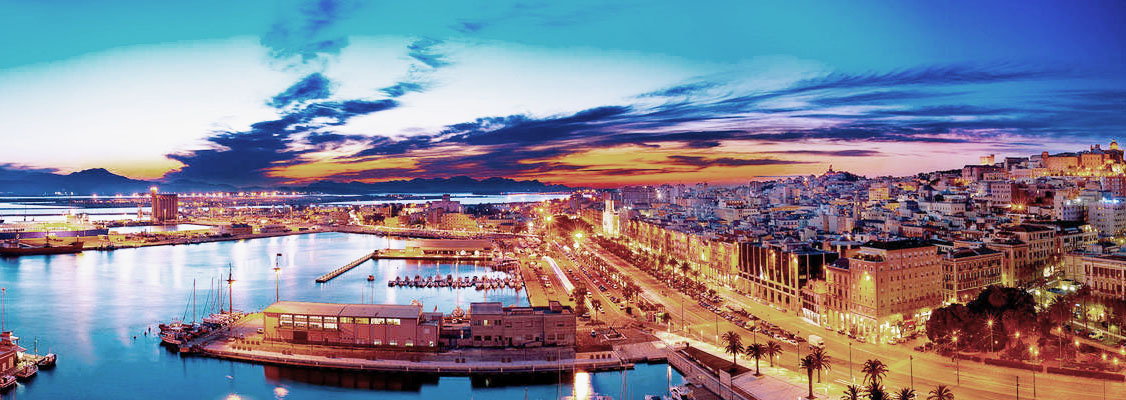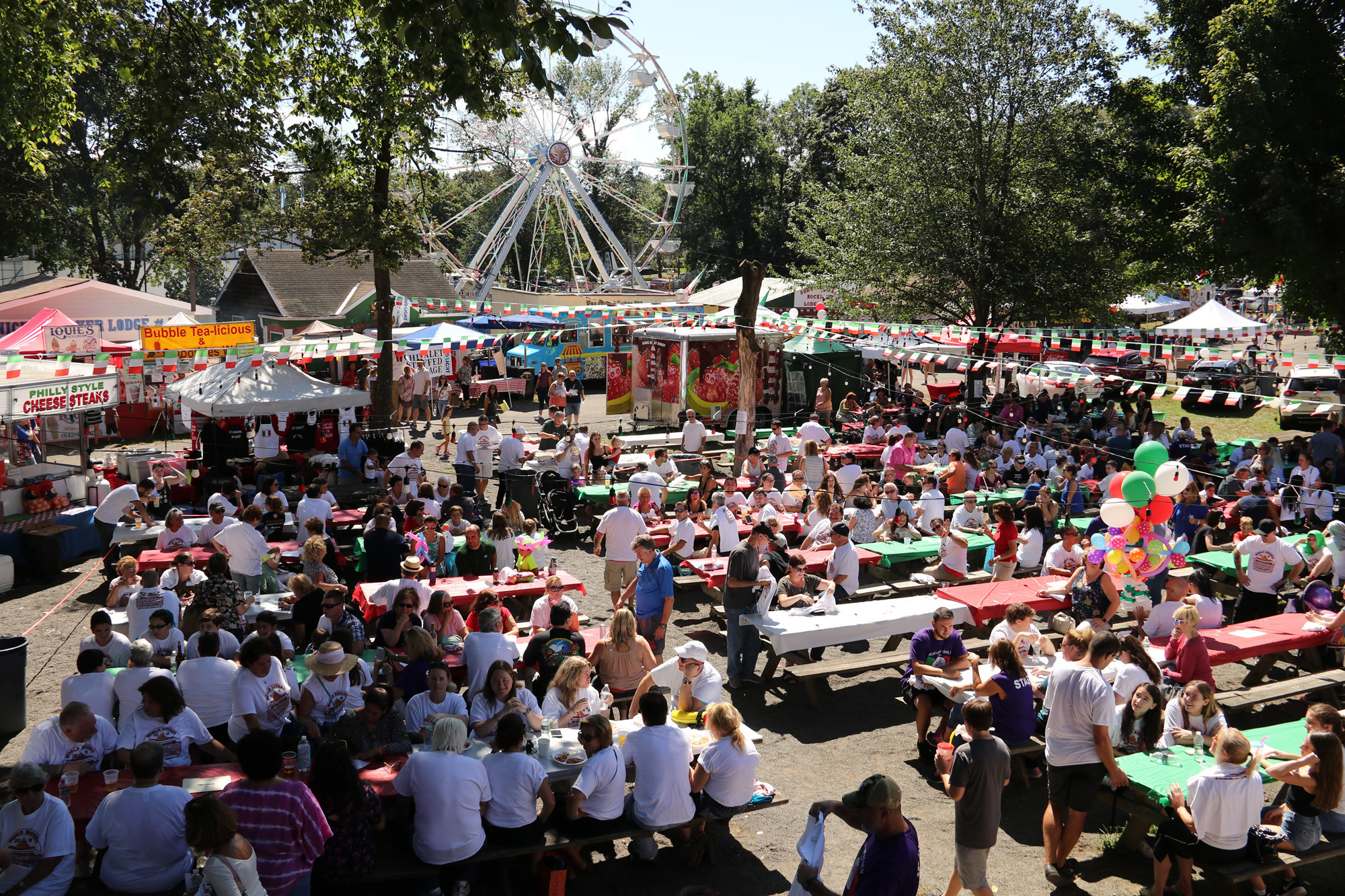Cagliari, the capital of the province and the region, is located at the heart of the beautiful Golfo degli Angeli, the Bay of the Angels. It was Italy’s Capital of Culture in 2015. Like Rome, it was built on seven hills, which identify the historic neighborhoods of the city. The province of Cagliari remains the most populous of Sardinia and although one can fly in to the airport at Elmas, only three and a half miles from the city, the best way to arrive in Sardinia’s capital is by sea. You will be greeted with a dramatic view of the city rising on the hills with golden-hued palazzi, domes and facades that seem to point upward to the rocky centerpiece of Il Castello – the city’s ancient castle. Cagliari is the most Italian of Sardinia’s cities. Vespas buzz down tree-fringed boulevards and locals hang out at busy cafes tucked under arcades in the seafront Marina district. Like many Italian cities, Cagliari’s history is in full view and everywhere you go you come across traces of its rich past – ancient Roman ruins, museums filled with prehistoric artifacts, centuries-old churches and elegant palazzi.
The name Casteddu in Sardinian means castle and it is the name given to upper part of the city and its ancient citadel. Il Castello is Cagliari’s most iconic image. Once home to the city’s aristocracy, it rises above the sturdy ramparts built by the Pisans and Aragonese. Inside the battlements, the old medieval city reveals itself like Pandora’s Box. The university, cathedral, museums and Pisan palaces are wedged into a jigsaw of narrow high-walled alleys. Sleepy though it may seem, the area harbors a number of boutiques, bars and cafes popular with visitors, students and in-the-know tourists. The neighborhood is known to locals as Su Casteddu. The walls are best admired and photographed from afar – good spots include the Roman amphitheater across the valley to the northwest and Bonaria to the southeast.
There are many sights to see in Cagliari. A popular religious pilgrimage site is Santuario and Basilica di Nostra Signora di Bonaria. Crowning the Bonaria hill, it is about a half mile southeast of Via Roma. People come from all over the world to visit the 14th century Gothic church sanctuary and pray to Nostra Signora di Bonaria, a statue of the Virgin Mary and Christ that saved a ship’s crew during a fierce storm centuries ago. To the right of the sanctuary, the towering basilica still acts as a landmark for returning sailors.
The sanctuary, the historic seat of the Mercedari order of monks, was originally part of a fortified compound built by the Catalano-Aragonese. Nowadays little remains of the fortress, apart from its Gothic portal, a truncated bell tower which initially served as a watchtower and the church. It is in the church that you’ll find the revered Virgin Mary and Christ. Above the church altar hangs a tiny 15th century ivory ship, whose movements are said to indicate the wind direction in the Golfo degli Angeli. You’ll find a golden crown from Carlo Emanuele I in the sanctuary’s museum. There are also the mummified corpses of four Catalano-Aragonese nobles whose bodies were found miraculously preserved inside the church. Adjacent to the sanctuary is the hulking neoclassical basilica. Construction began in 1704, but when the money ran out, building slowed to a crawl. The basilica was finally officially completed in 1926.
Closer to the center of town, Cagliari’s graceful 13th century Cattedrale di Santa Maria stands proudly on Piazza Palazzo. Except for the square-based bell tower, little remains of the original Gothic structure. The clean Pisan-Romanesque facade is a 20th century imitation, added between 1933 and 1938. Inside, the once-Gothic church has all but disappeared beneath a rich Baroque decor, the result of a late-17th century renovation. Bright frescoes adorn the ceilings and the side chapels spill over with exuberant sculptural whirls. The third chapel on the right, the Cappella di San Michele, is perhaps the most Baroque of all, with its ornate sculptural depiction of a serene-looking St. Michael casting devils into hell.
At the central door, note the two stone pulpits, sculpted by Guglielmo da Pisa between 1158 and 1162. They originally formed a single unit which stood in Pisa’s Duomo until the Pisans donated it to Cagliari in 1312. It was subsequently split into two by Domenico Spotorno, the architect behind the 17th century Baroque facelift. The enormous stone lions that originally formed its base were removed to the altar where they now stand. Beneath the altar is the Santuario dei Martiri (Sanctuary of Martyrs), the only one of several underground rooms that are open to the public. Carved out of rock, the sanctuary, which is named after the 179 martyrs whose relics are kept here, is an impressive sight with its sculptural decoration and intricate carvings.
Of the four museums at the Cittadella dei Musei, the Museo Archeologico Nazionalethis is the undoubted star. Sardinia’s premier archaeological museum showcases artifacts spanning thousands of years of history, from the early Neolithic through the Bronze and Iron Ages to the Phoenician and Roman eras. Highlights include a series of colossal figures known as the Giganti di Monte Prama and a superb collection of bronzetti (bronze figurines), which, in the absence of any written records, are a vital source of information about Sardinia’s mysterious nuraghic culture.
In all, about 400 nuraghic bronzes have been discovered. Depicting tribal chiefs, warriors, hunters, mothers and animals, the pint-sized figurines are stylistically crude, but remarkably effective as the Giganti di Monte Prama. Located on the third floor, these six foot high sculptures are the only nuraghic stone statues to have been discovered in Sardinia and date from the 8th and 9th centuries BC.
For those interested in shopping, Cagliari’s prime corner, where Via Roma and Largo Carlo Felice meet, is occupied by La Rinascente, Sardinia’s leading department store. Its six floors have plenty of upmarket fashion, with a food hall at the top, alongside a sophisticated bar. You will also find a myriad of small shops in the area offering locally made items and clothing.
The city of Cagliari boasts an eight mile long coastline – the Poetto. This popular beach becomes a center for meetings and nightlife in the hot summer evenings, thanks to the many restaurants and bars on the waterfront. If you choose a hotel in Cagliari for your vacation, the beach Poetto will offer sea and sun during the day, music and entertainment in the evening.
The beautiful Mari Pintau is just the first of a long series of bays and beaches that you will see continuing along the coastal road that leads to Villasimius and which will leave you breathless. The wilderness, in contrast with the soft blue of the sea, will guide you during your trip in the heart of one of the loveliest areas of Sardinia. The most beautiful beaches are that of Punta Molentis and Porto Giunco. If you choose the coast west of Cagliari, you’ll come across other beautiful beaches beginning with Santa Margherita di Pula and up to the fascinating area of Chia.
Finally, you cannot leave Cagliari without having seen and photographed the beautiful pink flamingos that inhabit the ponds of the capital; arm yourselves with a camera and head toward the Stagno del Molentargius and snap away at the pretty birds. They are just one of many fascinating and curious sights to see in this ancient province in Sardinia.





